
To Mars and Back in 11 Days
Intermediate Level
Text / 凱斯英語仁愛分班 / Ms. Ann


All of us know about space to some extent. We know that the sun shines down on us every single day and that it is thousands upon thousands of miles away. We also know that on clearer nights, far away from light pollution, stars decorate the night sky and bring a little more romance into our busy lives. But, very seldom do we stop to wonder what came before these wonders. We rarely stop to think about what happened before the sun was created or when the universe was created. Our past winter camp, Big Bang Intermediate, delved into questions seldom asked and even more seldomly answered, and took a look at our universe’s origin story.
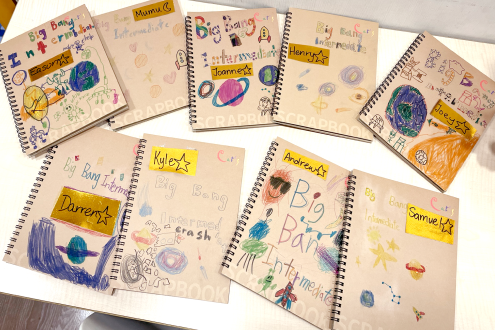
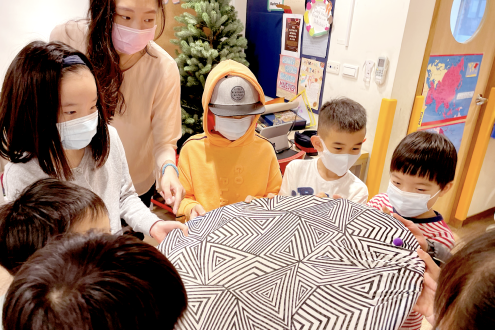
Shorter than our usual summer camps, the winter camp was over in the blink of an eye, in just three weeks. Within the short three weeks, we went from the micro to the macro. Students built a solid knowledge foundation first through learning about the tiny atoms that make up the universe in its early stages. Then, through hands-on activities, they created a marvelous model of the atomic model and reinforced their knowledge through visual and kinesthetic learning. Yet, these are just the building blocks to more complex knowledge for the following weeks. After our brief introduction to the Big Bang Theory, students were fascinated and surprised to find out that it took so long for us to become a tiny part of this vast universe.
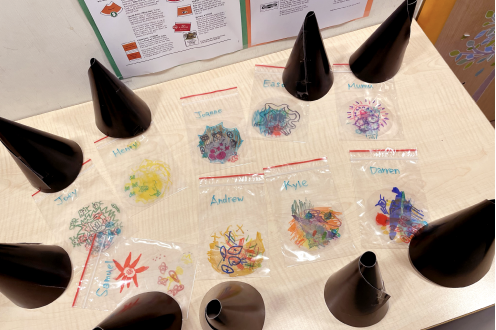

As the camp is not an ordinary class, but a hands-on workshop that focuses on applicable knowledge, our second week was filled with hands-on activities and crafts. While learning about the solar system and the milky way, students made a large-scale Milky Way poster complete with captions on the different parts that make up our amazing galaxy. Who knew there was a black hole at the center of our Milky Way slowly devouring the galaxy from the inside out? We zoomed into the different stars and constellations hanging in the night sky and made a dreamy lamp shade with constellations, and other extraterrestrial objects often seen in space. This segued into getting to know our solar system. We learned a little bit about all the planets and how we came up with the solar system model we have today. Our heliocentric solar system model was not the first model of the solar system. Before that, astronomers claimed that Earth was the center of our solar system, which is now known as the geocentric model. Of course, we don’t use this model anymore. Imagine all the errors in calculations astronauts would run into with crazy planetary orbits! Aside from that, did you know Jupiter has 64 moons, or that Venus was the hottest planet in our solar system? Some of those fun facts were even new to me! With their newfound knowledge and interest in the planets, students transformed our classroom into a to-scale solar system with hand-painted Styrofoam balls.
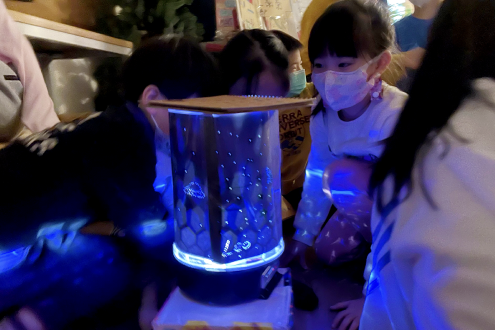
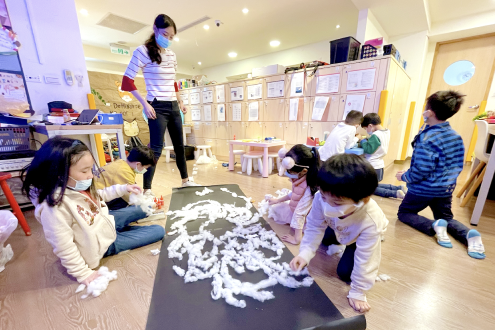
In our final few classes, we looked at our neighboring planet, Mars, and learned about the possibility of having life on another planet. This unit is my favorite as we consolidated everything we knew about the universe and gave good thought to what might happen if we all moved to Mars. Our classroom was transformed into the dusty terrain of our neighboring red planet. The class came together and talked about possible scenarios that might arise and ways to mitigate them. Through the interactive board game, Mars Colony, the students scanned through different cards that explained the various labs, rooms, and resources needed to live on Mars and built their very own Mars Colony. Happiness is a key concern in the Mars colony, which prompted the students to question whether moving to Mars would be a good idea at all. We looked at all the resources we’d need to transport from Earth to Mars, and the problems we’d face if one broke down. As ambitious as we are as a species, the students concluded it might be easier to spend the 50 billion allocated to building the Mars colony to fight climate change on Earth.
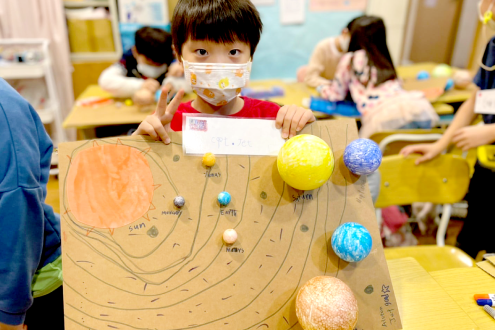
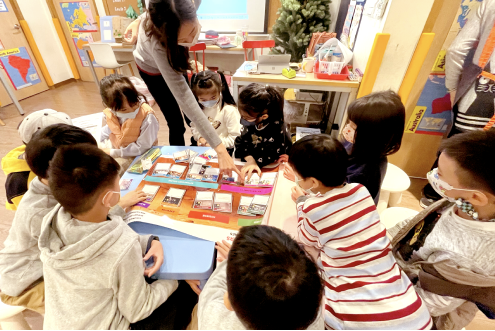
Some journeys take you farther from where you come from but closer to where you belong. Through learning about stars and galaxies light years upon light-years away, we see just how small we are compared to the ever-expanding universe. It would be ludicrous to even
think that Earth is the center of our universe today. However, people in the past did think of it this way, and students seemed to realize geocentricity isn’t just a model, but also a reflection of our humanity. It is natural to see ourselves as the center of the universe, because we only see through our own eyes, and experience the world through our senses. However, it would be wrong to think the world revolves around us. I believe there is a newfound appreciation of being a part of something much larger in every student. After all, while we are all unique individuals each with our hopes and dreams that seem to overshadow everyone else's, we are but collectively, a few billion specks on a planet luckily situated on the Goldilocks planet called Earth.




